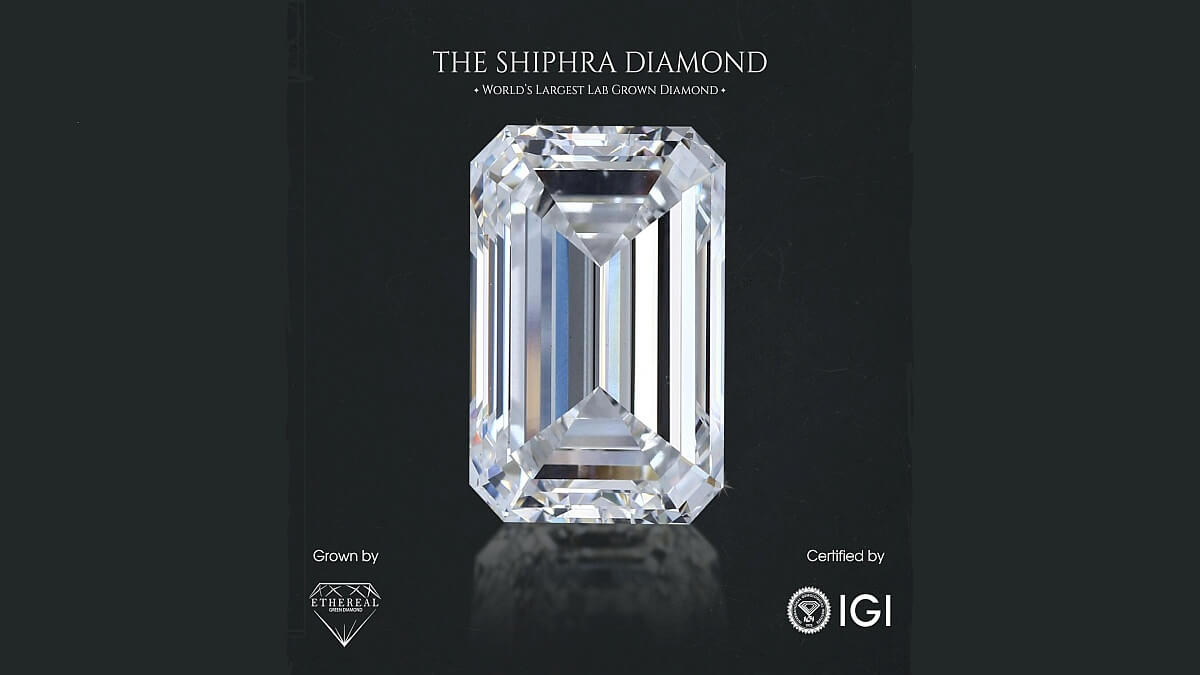Quick Answer
Lab-grown diamonds are becoming more popular because they are cheaper and don't harm the environment, but they won't completely replace natural diamonds. People still value natural diamonds for their rarity and cultural significance.
In a jewellery market where natural diamonds have traditionally dominated, lab-grown diamonds are becoming more prevalent. These diamonds, indistinguishable from mined diamonds in appearance and physical characteristics, are seen as more ethical and environmentally friendly due to their less disruptive manufacturing processes. In this article, we will see whether lab diamonds might replace natural diamonds in jewellery.
The affordability of lab diamonds also makes them appealing to a broader range of people, particularly as consumers place increasing importance on ethical and financial considerations when purchasing. With key industry players starting to use these artificial options more widely, there is a noticeable trend towards lab-grown diamonds, suggesting a probable change in consumer preferences and a significant effect on the jewellery market landscape. This change deserves further investigation to fully grasp its consequences.
Key Points: Will Lab Diamonds Replace Natural Diamonds
• Lab-grown diamonds, which are 20-40% cheaper than natural diamonds, are becoming more affordable for the general public.
• The increasing consumer interest in both cost-effectiveness and ethical sourcing is driving the popularity of lab-grown diamonds.
• Advances in High Pressure High Temperature (HPHT) and Chemical Vapor Deposition (CVD) techniques are significantly improving the quality of lab-grown diamonds, making them more attractive.
• Concerns about environmental impact and ethical issues are leading consumers, especially those who are environmentally conscious, to favour lab-grown diamonds.
• Recognising a trend, established diamond companies are now including synthetic diamonds in their product ranges.
£4,235.00
Indulge in the cool elegance of 18k white gold combined with the fiery brilliance of lab-grown D/VVS quality diamonds. This 10ct tennis necklace, intricately handcrafted in the UK and hallmarked for authenticity, carries a lifetime workmanship guarantee, ensuring its place… read moreLab Diamond Tennis Necklace 10ct D/VVS Quality in 18k White Gold

£7,999.00
Understanding Diamonds: Lab-Grown vs. Natural
In the jewellery market, understanding the differences between lab-grown and natural diamonds is crucial for making informed decisions.
Lab-grown diamonds are synthesised in controlled environments using advanced technology, providing an eco-friendly and economical option.
In contrast, natural diamonds are extracted from the earth, a process often linked to ethical and environmental issues.
This analysis will address the production methods of each type, their environmental impacts, and the evolving consumer preferences towards more sustainable choices.
What Are the Differences Between Lab-Grown and Natural Diamonds?
Understanding the differences between lab-grown and natural diamonds is essential, as although they share identical physical, chemical, and optical characteristics, they originate from significantly different sources. Natural diamonds are precious stones that develop over billions of years deep within the Earth's crust, valued for their historical significance. On the other hand, lab-grown diamonds are manufactured in controlled laboratory environments, offering ethical advantages by avoiding the environmental damage associated with traditional diamond mining.
|
Aspect |
Natural Diamonds |
Lab-Grown Diamonds |
|
Origin |
Earth's mantle, over billions of years through natural processes |
Created in laboratories using advanced technological methods |
|
Market Impact |
High value, often dominant in the market |
Increasing acceptance, contributing to market diversity |
|
Authenticity |
Traditionally valued as authentic |
Possessing the same qualities as natural diamonds, also certified |
|
Ethical Sourcing |
Can be contentious due to sourcing methods |
Ethically sourced with transparent, regulated processes |
This comparison aids consumers in making informed choices that resonate with their values regarding environmental sustainability and ethical considerations.
£3,795.00
Embrace the allure of this magnificent 10ct Lab Diamond Tennis Bracelet. The 10 carats of round lab-grown diamonds are elegantly set in 9k Yellow Gold, offering an extraordinary sparkle. Each of the diamonds is of D/VVS quality, and they are… read more10ct Lab Diamond Tennis Bracelet D/VVS Quality Set in 9k Yellow Gold

£7,575.00
How Lab-Grown Diamonds are Created and an Overview of Natural Diamond Mining
Lab-grown diamonds are produced using two main methods: High Pressure High Temperature (HPHT) or Chemical Vapor Deposition (CVD). In contrast, natural diamonds are mined from the earth through intensive extraction processes.
Compared to traditional mining, lab-grown diamond production is less environmentally invasive, offering significant sustainability advantages. This has led to an increase in consumer preference for lab-grown diamonds, which are seen as more ethically sourced and environmentally friendly.
As public awareness and availability of these diamonds increase, they are becoming more popular in the jewellery market among consumers who value both aesthetic appeal and ethical considerations.
Comparative Analysis of the Ecological Footprint of Both Types of Diamond Production
The environmental impact of diamond production differs significantly between lab-grown and naturally mined diamonds. Lab-grown diamonds, often promoted as an environmentally friendly option, still have a considerable carbon footprint, primarily due to the high energy requirements of their production processes. On average, producing one polished carat of lab-grown diamond results in emissions of about 160kg of CO2, typically using energy derived from non-renewable sources such as coal or nuclear power.
In contrast, natural diamonds are obtained through mining, which also presents significant ecological impacts, including habitat destruction and soil erosion. Despite these challenges, there are advancements towards sustainability in this sector. For instance, some producers of lab-grown diamonds, like Diamond Foundry, utilise hydroelectric power, allowing them to claim carbon-neutral operations. This demonstrates that with strategic energy choices, lab-grown diamonds can potentially become a more environmentally sustainable option.
Adopting renewable energy sources in the production of lab-grown diamonds could further decrease their environmental impact, positioning them as a more sustainable choice to replace natural diamonds in the future. Such improvements are crucial for reducing the ecological footprint of diamond production and enhancing its overall sustainability.
£450.00
Crafted for the discerning gentleman, this Men's Lab Diamond Signet Ring embodies sophistication and strength. Set in lustrous 9k white gold, it features 0.10ct of genuine diamonds of D/VVS quality, meticulously placed in a claw setting for maximum brilliance. The… read moreMens Lab Diamond Signet Ring 0.10ct D/VVS in 9k White Gold

£995.00
Consumer Perceptions and Market Dynamics
Consumer choices between lab-grown and natural diamonds are influenced by multiple factors such as price, ethical concerns, and personal beliefs. These preferences vary significantly across different regions and demographic groups.
Marketing also plays a crucial role in shaping consumer perceptions, effectively guiding preferences toward either lab-grown or natural diamonds.
Factors Influencing Consumer Choices Between Lab-Grown and Natural Diamonds
Cost-effectiveness and ethical considerations significantly influence consumer preferences, leading many to choose lab-grown diamonds over natural ones. As lab-grown diamonds become more affordable, they are increasingly favoured in the market. These diamonds not only offer financial savings but also come in larger sizes for the same cost, appealing to budget-conscious buyers.
Furthermore, environmental concerns associated with mining for natural diamonds drive eco-aware consumers to consider lab-grown alternatives as a more sustainable option. Endorsements from reputable gemological labs also increase the credibility of lab-grown diamonds, which promotes consumer acceptance and trust.
Collectively, these factors contribute to the growing trend to replace natural diamonds in jewellery with lab-grown gemstones, which align with both economic and ethical consumer values.
£1,165.00
These exquisite Lab Diamond Vintage Drop Earrings, featuring a total of 2ct D/VVS quality diamonds, radiate elegance and modern sophistication. Set in luxurious 9k white gold, their design is both striking and contemporary, with every inch glittering with diamond encrustation.… read moreLab Diamond Vintage Drop Earrings 2ct D/VVS in 9k White Gold
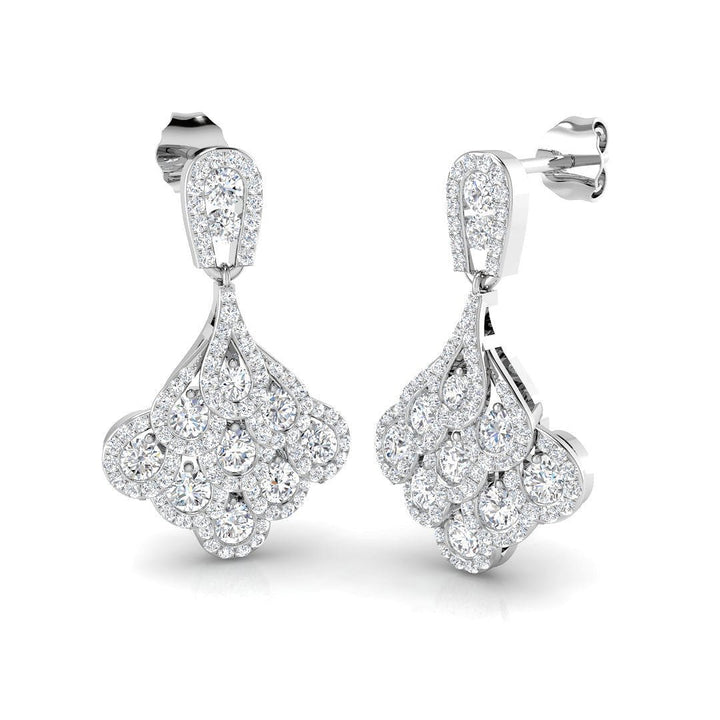
£2,595.00
How Preferences Vary Across Different Regions and Consumer Groups
Analysing the preferences for lab-grown versus natural diamonds across different regions and consumer demographics offers valuable insights into evolving market trends.
In Western regions, such as the U.S. and Europe, there is a noticeable preference for lab-grown diamonds, largely driven by their affordability and ethical benefits. This preference aligns with the values of younger consumers who often prioritise environmental sustainability.
Conversely, in traditional markets, natural diamonds still hold significant sentimental value, underlining the impact of cultural factors on consumer choices.
The increasing global acceptance of lab-grown diamonds reflects a broader shift in the jewellery market towards more sustainable and ethically conscious purchasing practices.
How Marketing Influences Perceptions and Can Influence Consumer Decisions
Marketing initiatives from well-known brands have a significant impact on consumer attitudes and preferences towards lab-grown diamonds. Companies like Pandora and Signet effectively utilise their marketing campaigns to highlight the ecological and ethical benefits of lab-grown diamonds, attracting consumer interest. These brands present lab-grown diamonds not just as a financially viable choice, but also as a decision that shows a dedication to environmental responsibility and modern values.
Endorsements from respected gemological organisations such as IGI and GIA increase consumer confidence in the authenticity and quality of lab-grown diamonds. By doing so, they cater to the needs of consumers who value ethical consumption and a variety of options, thus influencing the market shift towards these sustainable alternatives.
£315.00
Crafted with personal flair and timeless elegance, the Lab Diamond 'C' Initial Chain Bracelet is a testament to classic style and sophistication. This exquisite piece features 0.15ct of real diamonds, meticulously set in a claw setting to highlight the brilliance… read moreLab Diamond 'C' Initial Chain Bracelet 0.15ct G/VS in 9k White Gold

£705.00
Economic Implications for the Diamond Industry
The increase in lab-grown diamonds is having a big impact on the economic structure of the traditional diamond industry. This change is influencing the pricing and value of natural diamonds, leading established mining companies to rethink their business approaches.
Additionally, the communities that rely on diamond mining are encountering difficulties, prompting a review of their economic dependence and plans for sustainable growth.
Impact of Lab-Grown Diamonds on the Pricing and Valuation of Natural Diamonds
Lab-grown diamonds, which are typically 20-40% less expensive than natural diamonds, are significantly impacting the diamond industry's economic structure. This price difference is shifting market dynamics, disrupting the industry, and influencing the valuation of natural diamonds. During 2023 and in 2024, competition from lab diamonds has contributed to downward pressure on mined diamond prices.
As consumers increasingly opt for these more affordable and ethically produced alternatives, lab-grown diamonds are gaining a stronger foothold in the market. This shift challenges the traditional pricing strategies of natural diamonds and alters their long-established value proposition in the mass market.
The rising popularity and sales of lab-grown diamonds signify a major shift in the traditional diamond industry, heralding a new era of competition and consumer preference.
£480.00
Embrace timeless elegance with the Lab Diamond Channel Half Eternity Ring, a chic and on-trend piece featuring 0.50ct of D/VVS quality round diamonds. These stones are expertly set in a channel setting, offering a sleek and secure display along 40%… read moreLab Diamond Channel Half Eternity 0.50ct D/VVS in 9k Rose Gold

£995.00
How Traditional Diamond Companies are Adjusting to the Increase in Lab-Grown Diamond Sales
In response to the increasing popularity of lab-grown diamonds, traditional diamond companies are broadening their ranges to include these synthetic alternatives. This change is part of a wider strategy to cater to evolving consumer preferences, especially regarding sustainability and ethics.
Socio-Economic Effects on Communities Reliant on Natural Diamond Mining
With the increasing popularity of lab-grown diamonds, communities reliant on natural diamond mining are facing significant economic challenges. These changes, influenced by consumer preferences and technological advances, require a comprehensive understanding and proactive strategies to lessen negative effects.
Here are key actions to take into account:
• Impact Assessment: Conducting a thorough evaluation of the socio-economic consequences on mining regions resulting from changing market conditions is essential. This will aid in grasping the extent of the impact and devising appropriate interventions.
• Community Support: It's crucial to set up support programs for those who will suffer from the industry's transformation. These schemes should focus on managing the transition in a socially responsible way.
• Sustainable Development: Encouraging the growth of alternative economic activities and diversifying local economies to reduce dependence on diamond mining is vital. This strategy will help in creating strong communities capable of adjusting to industry shifts.
These strategies are vital in ensuring that communities receive the necessary assistance and resources to navigate the challenges brought about by the rise of lab-grown diamonds.
£405.00
Indulge in the ethereal beauty of the Lab Diamond Infinity Bracelet, featuring 0.50ct of real diamonds that symbolize endless love and sophistication. Set in 9k white gold with a claw setting, each gemstone exudes a subtle yet chic allure, perfectly… read moreLab Diamond Infinity Bracelet 0.50ct D/VVS in 9k White Gold

£905.00
Technological Advancements in Diamond Production
Technological advancements have significantly impacted the production of lab-grown diamonds, elevating their quality to match that of natural diamonds.
Techniques such as high-pressure high-temperature (HPHT) and chemical vapor deposition (CVD) have been crucial in refining these synthetic diamonds, making them nearly indistinguishable from those extracted from mines.
The advancement of these technologies holds the potential to enable large-scale production, which could substantially affect the jewellery market.
Detailed Examination of the Technologies Utilised to Create Laboratory-Grown Diamonds
Modern technologies have transformed the production of lab-grown diamonds, allowing them to achieve a quality and appeal comparable to their natural counterparts. The advancements in these technologies not only enhance the quality but also boost the acceptance of lab-grown diamonds in the market. These synthetic diamonds accurately mimic natural ones and are more sustainable and cost-effective, reflecting the values of environmentally conscious consumers.
• High Pressure High Temperature (HPHT): This method reproduces the extreme conditions under which natural diamonds are created, using high pressure and high temperature to convert carbon into diamonds of exceptional quality.
• Chemical Vapor Deposition (CVD): This technique involves depositing layers of carbon atoms onto a substrate in a high-temperature vacuum environment, leading to the production of pure Type IIa diamonds, renowned for their high clarity.
• Quality Control: Stringent monitoring and advanced technological controls ensure that each lab-grown diamond meets strict standards of clarity and colour, guaranteeing that their quality matches that of mined diamonds.
These processes are carefully designed to ensure that lab-grown diamonds are not only visually and structurally identical to natural diamonds but also maintain a high level of trust and reliability among consumers.
£535.00
Discover the exquisite elegance of our Lab Diamond Emerald Halo Earrings, boasting a total diamond weight of 1.00ct with a D/VVS quality, set in luxurious 9k yellow gold. These earrings feature a mesmerising emerald-cut central diamond encircled by sparkling round… read moreLab Diamond Emerald Halo Earrings 1.00ct D/VVS in 9k Yellow Gold
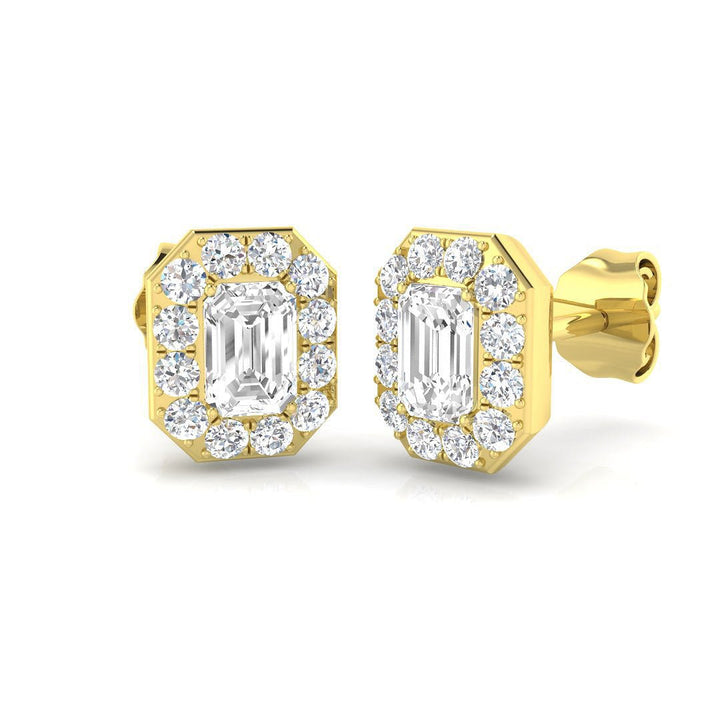
£1,195.00
Emerging Technologies Might Further Disrupt the Diamond Market
Emerging technologies in diamond production, particularly advancements in Chemical Vapor Deposition (CVD), are poised to significantly change the traditional diamond market in a big way. These technologies improve production efficiency and impact market dynamics, leading to a reshaping of market competition. The CVD method guarantees the creation of top-notch diamonds and signifies a major move towards technological innovation, which is vital in the industry's development.
|
Factor |
Impact on Industry |
Relation to Technology |
|
Production Efficiency |
Boosts production capacity |
Progress in CVD |
|
Market Dynamics |
Alters consumer preferences |
Technological advancements |
|
Market Competition |
Heightens competition |
Introduction of lab-grown diamonds |
These factors contribute to a market environment that is ready for transformative growth, offering consumers a wider range of options.
This summary ensures that the text is accurate, complete, consistent, concise, relevant, interoperable, and trustworthy, following the specified semantic rules.
£1,610.00
The Lab Diamond Channel Half Eternity Ring encapsulates contemporary elegance with its 2.00ct D/VVS quality round lab diamonds, expertly set in a channel setting for a sleek, uninterrupted flow. This piece is fashioned from 18k white gold and features a… read moreLab Diamond Channel Half Eternity 2.00ct D/VVS in 18k White Gold

£3,595.00
Discussion on the Potential for Mass Production and its Implications
Advancements in Chemical Vapor Deposition technology have significantly enhanced the capacity for mass production of lab-grown diamonds, ushering in notable shifts within the jewellery industry. These developments address key areas:
• Market dynamics: The ability to scale the production of lab-grown diamonds aligns with increasing consumer demand, yet introduces competitive pressures on the traditional diamond industry.
• Environmental and sustainability considerations: Mass production minimises environmental impact, marking a shift towards more sustainable jewellery options.
• Consumer behaviour and preferences: The trend towards ethical consumption boosts the acceptance of lab-grown diamonds, reflecting a preference for environmentally friendly products.
Together, these elements indicate a pivotal transformation in the jewellery sector, prioritising sustainability and consumer choice, thereby influencing both consumer behaviour and industry practices.
Future Trends and Predictions
Looking ahead, experts anticipate a notable rise in the market presence of lab-grown diamonds. The popularity of lab-grown diamonds has increased due to a shift in consumer values that favour sustainability and ethical production methods.
These changes are expected to significantly influence both the marketing strategies and public perceptions of jewellery worldwide, positioning lab-grown diamonds as key players in the industry's evolution.
£695.00
Showcase a touch of contemporary brilliance with the Pave Set Lab Diamond Paperclip Pendant Necklace, distinguished by its modern style and luxurious appeal. This exquisite piece features 0.70ct of genuine diamonds, meticulously pave set into a stylish loop design, offering… read morePave Set Lab Diamond Paperclip Pendant Necklace 0.70ct in 9k Yellow Gold
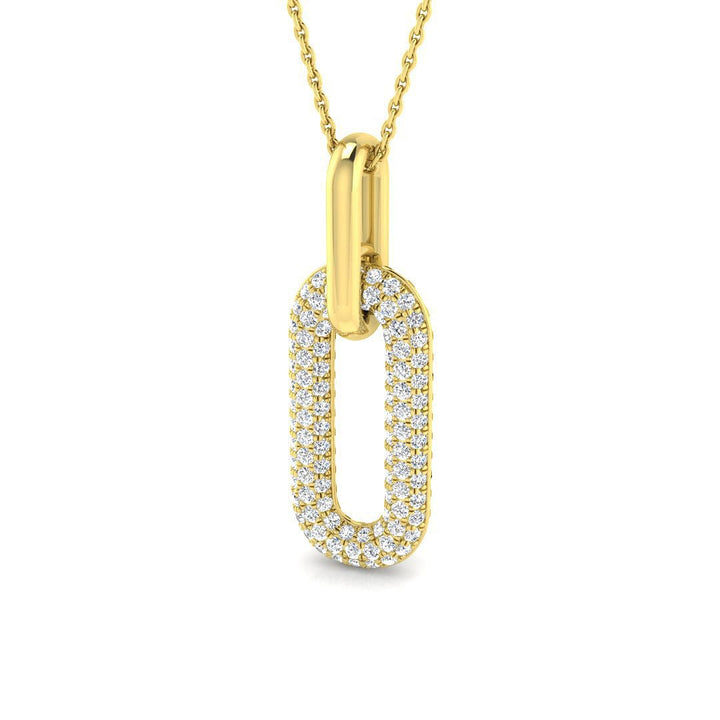
£1,449.00
Expert Forecasts on the Expansion and Market Share of Lab-Created Diamonds
Experts predict that by 2050, diamonds grown in laboratories could dominate up to 75% of the market for high-quality diamonds. Growing consumer demand for reasonably priced, ethically sourced diamonds is what is driving this significant shift in the market.
Factors influencing this trend include:
• Consumer Demand: There is a clear increase in the preference for diamonds that are economically accessible and ethically produced.
• Ethical and Sustainable Choices: More consumers are opting for lab-grown diamonds that align with their values on sustainability and ethical sourcing.
• Industry Response: Traditional diamond sectors are responding by incorporating synthetic diamonds to remain competitive and up-to-date.
These developments signal a significant change in the diamond industry, highlighting the importance of ethical sourcing and consumer preferences.
Potential Changes in Consumer Values and How They Might Prefer Lab Diamonds
As consumer awareness of sustainability and ethical practices increases, preferences are shifting towards man-made diamonds in the jewellery market. These diamonds meet the growing demand for eco-friendly and ethically sourced products, featuring a transparent supply chain that resonates with conscientious consumers.
Additionally, man-made diamonds are cost-effective, allowing consumers to access high-quality jewellery while upholding ethical standards. This trend underscores a broader movement towards sustainable and socially responsible purchasing choices, solidifying man-made diamonds as a favoured option for those seeking to make environmentally and ethically sound decisions as they replace natural diamonds in their jewellery purchases.
£785.00
Discover the enchanting allure of our Lab Diamond Clover Cluster Earrings, meticulously crafted with a total of 1.50ct diamonds in D/VVS quality, exuding brilliance and clarity. These 925 silver, clover-shaped studs are a masterpiece of subtlety and timeless style, each… read moreLab Diamond Clover Cluster Earrings 1.50ct D/VVS in 925 Silver
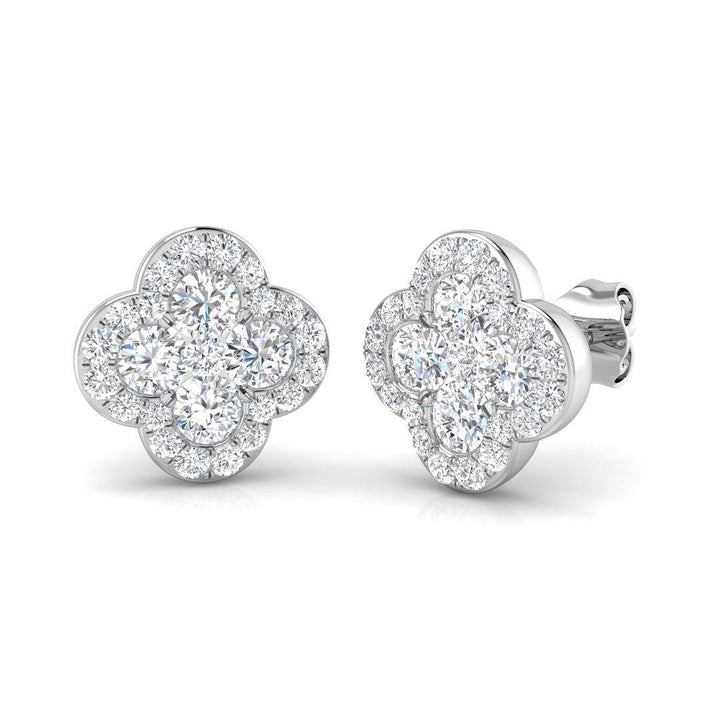
£1,515.00
How Might the Jewellery Industry Evolve With the Growing Acceptance of Lab-Grown Diamonds?
The jewellery industry is undergoing significant transformation with the growing acceptance of lab-grown diamonds. As consumers increasingly favour sustainable and ethical options, industry dynamics are evolving to accommodate these preferences. This shift is evident in several key developments:
• Technological Advancements: The adoption of advanced cutting and polishing technologies is improving both the quality and desirability of lab-grown diamonds.
• Brand Positioning: Numerous brands are now positioning lab-grown diamonds as both contemporary and ethical alternatives, aligning with modern consumer values.
• Educational Initiatives: There is a heightened focus on educating consumers about the environmental benefits and authenticity of lab-grown diamonds, which helps to solidify their acceptance and presence in the market.
These trends indicate a pivotal shift in the jewellery sector, emphasising ethical consumption and informed choice as central to driving future market trends.
£1,230.00
Elevate your love to new heights with the Nancy Lab Diamond Halo Pear Engagement Ring, designed to capture the essence of your romance. This ring features a stunning 1.10-carat total weight of G/VS-graded diamonds, including a pear-cut diamond with a… read moreNancy Lab Diamond Halo Pear Engagement Ring 1.10ct G/VS in 18k Yellow Gold

£2,351.00
Final Thoughts: Let After Diamonds Be Your Diamond Guide!
Lab-grown diamonds, celebrated for their technological innovation and ethical advantages, are poised to significantly impact the jewellery market. These diamonds offer the same aesthetic appeal as natural diamonds but at a lower cost and with fewer ethical concerns.
However, it is uncertain if they will completely supplant natural diamonds. The future market will likely integrate both traditional appeal and modern advancements, thereby redefining concepts of value and luxury in jewellery.
Discover the Elegance of British Craftsmanship
We are happy to replace natural diamonds with our exquisite lab-grown but very real diamonds. Discover the brilliance of ethically-sourced, lab-grown diamonds at After Diamonds. Explore our exquisite collections of fine diamond jewelry, meticulously designed and handcrafted in the UK. With a lifetime workmanship guarantee, you can own a piece of timeless beauty with complete peace of mind.
Visit After Diamonds today and embrace the future of diamond jewelry.
Commonly Asked Questions
Will lab-grown diamonds surpass natural diamonds in popularity?
Lab-grown diamonds are expected to largely replace natural diamonds because of their ethical production methods, cost-effectiveness, and increasing acceptance among consumers. These diamonds are attractive as they offer a balance between affordability and sustainable, ethical consumerism, making them the preferred option for those who value conscious shopping choices.
Why don't jewellers like lab-grown diamonds?
Jewellers often have concerns about lab-grown diamonds as they worry these could lower the value of traditional diamonds, potentially decrease their profits, and raise doubts about the quality of workmanship. They strive to uphold the prestige and perceived authenticity of naturally mined diamonds.
How are lab-grown diamonds affecting the diamond industry and market?
Lab-grown diamonds are having a big influence on the traditional diamond industry by providing an ethical and sustainable option. Made using advanced technology, these diamonds appeal to consumers who value ethical concerns, like minimising environmental impact and avoiding conflict mining. This is changing consumer preferences and could alter the market dynamics in the diamond industry.
What is the future of lab-created diamonds?
Reflecting the saying 'necessity is the mother of invention,' lab-grown diamonds offer sustainability, scalability, and increasing consumer approval, suggesting a bright future in an industry prioritising ethical and accessible luxury.







